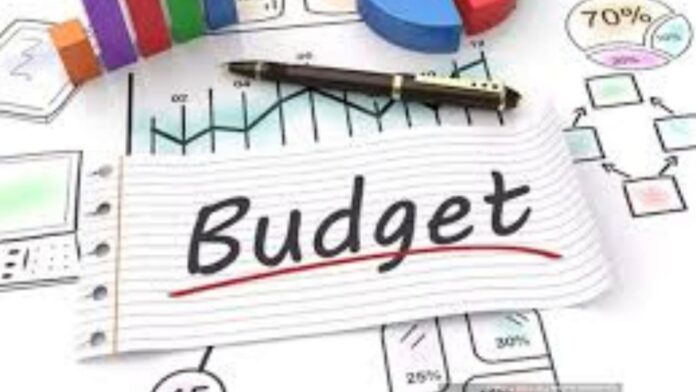Introduction
A budget, in common economic parlance, is a statement of income and expenditure. Be it at the personal level or at the state level, a budget always concerns itself with these two aspects. But an in-depth evaluation bears testimony to the fact that there is more to it than what meets the eye. A state budget essentially draws the contours of the economic philosophy of the government, outlines priorities, and probably most importantly, lays the roadmap for long-term socio-economic development. Thus, it would be sheer injustice if we analyzed a modern budget exclusively from an economic standpoint and completely ignored the strong social underpinnings.
Historical Perspective

Early Years of Independence
The journey of the Indian budget started with R.K. Shanmukham Chetty way back in November 1947, when we emerged from the shadows of colonial rule under Great Britain and started our independent economic journey. The budgets presented during the early years of independence, i.e., the fifties and early sixties, struggled with the socio-economic imperatives of that era and formulated economic policies accordingly, much along the expected lines. Basically an agrarian economy, India realized the significance of industrialization as an essential economic imperative that would facilitate our flight towards the realm of modern development, and also the need for active state participation in this domain.
Socialistic Framework and Taxation
The fulcrum of the socialistic thought process that endeared itself to the policymakers of independent India envisaged the need for strong fiscal support and massive funds that remain an essential prerequisite for industrialization across the world. Foreign assistance trickled in, but the need to develop a sustainable industrial infrastructure also required developing a healthy tax mechanism, which was actively pursued. During these years, our policymakers levied taxes to shore up the fiscal deficit. A vast network of bureaucracy was developed and allowed to thrive to monitor the tax collection mechanism and implement the taxation policies in letter and spirit, much in line with the basic principles of a socialistic ecosystem. Being at the nascent stage of development, adequate emphasis was put on the development of social sector infrastructure—hospitals, schools, academic institutions of excellence—resulting in a massive increase in welfare expenditure alongside capital expenditure (capex), as was the requirement of the day.
Evolution in the Eighties and Nineties
This trend continued until the end of the seventies or mid-eighties, to be more precise. The Indian economy witnessed a proliferation of heavy industries primarily engaged in fulfilling the infrastructural requirements of a fledgling economy and also catering to the larger social objective of employment generation. The objectives were fulfilled to a great extent, but like so many other socialistic economies, operational inefficiency crept in, and there was nothing much to write about the general quality and living comfort of a common man, which remained more or less fettered by the chains of bureaucracy and procedural wrangling—an essential hallmark of a controlled economic system. The Hindu rate of growth—a nomenclature for stagnated growth in the range of 3-4%—came to characterize our economy from the early fifties to the mid-eighties, with agriculture still playing a predominant role.
The decade of the eighties, particularly the late eighties, witnessed a sweeping change in the political ecosystem as a slew of political outfits came into existence with strong anti-establishment predilections. Our policy planners gradually started factoring in various political compulsions along with the genuine socio-economic imperatives. Coalition politics and its concomitant requirements started gaining ground, which until that time was an exclusive domain of economic ideologies and social prerogatives. Budgets gradually started getting transformed more into political treatises apart from being testaments validating the socio-economic predilections of the ruling dispensation. Given this backdrop, the budget of 1991, as presented by then-Finance Minister Mr. Manmohan Singh, was truly revolutionary as it marked a complete departure from the age-old worn-out economic shibboleths and tried to absorb the winds of liberalization that were blowing so strongly across global shores. The Indian middle class experienced a silent revolution in terms of transformed consumption patterns with wide exposure to global consumer goods and a wide-open, globally updated open market mechanism which until that time was a strict anathema to the Indian economic system.
Budget 2024: Analysis and Implications

Political Coalition and Financial Packages
It would be worthwhile to analyze the present budget with this backdrop in mind. The present budget is more or less in line with the ones we have seen since 2014, when we witnessed a political change and a rightist government firmly ensconced in power. However, the major differentiator that has surfaced in this budget from the previous ones is the compulsion of political coalition, which made it possible for Bihar and Andhra Pradesh to bag special financial packages of 5000-10000 crores and 15000-20000 crores respectively. Clearly, this is a burden on the exchequer, but then again, as I mentioned, coalition politics has brought its own set of compulsions, and at times budgetary priorities are clearly tweaked and compromised. Having said that, let us examine the budget strictly from the perspective of income and expenditure.
Expenditure Allocation
If we look closely at the budgetary allocation or proposed expenditure in layman’s terms, we find that defense has received the maximum allocation of 454.77 lakh crores, all components of the social infrastructure segment, i.e., education, social welfare, health sector combined, have received an allocation of 271.42 lakh crores. Agriculture has received 150 lakh crores, while rural development, including infrastructure, has received an impressive amount of 265 lakh crores respectively. As evident, the government has clearly outlined its priorities with defense occupying the top slot, followed by infrastructure and industry. Social welfare, or to be more precise, the development of social infrastructure, does not hold a position of eminence in the government’s list of priorities. Emphasis on capital expenditure while assigning relatively less importance to social sector and welfare priorities is clearly in line with the priority of the incumbent government that envisages governmental intervention at the lowest possible extent. Huge capital expenditure has been proposed as it believes in the time-worn principle of the multiplier effect—that the development of infrastructure will generate income, followed by demand, necessitating supply, increased production volume, economic activity, manpower requirement, and finally employment and output. The economy will be back on track, and unemployment, which has actually exacerbated during the last few years, will be on course to revival. Well, this ‘multiplier effect’ has been the major guiding force behind the previous budgets also, but a close analysis reveals that the strategy has not worked in the desired direction. In absolute terms, the organized sector has failed to generate adequate employment opportunities and private investments have failed to take off. Takeoff to the next stage of development has remained beyond our realization.
Revenue Generation
Well, in order to find a comprehensive answer to this question, we need to take a close look at the revenue aspect in close conjunction with the expenditure. For the government, where does the money come from? Out of every 1 rupee, 19 paise comes from income tax, GST and other taxes contribute 18 paise, the remaining from customs, excise, commercial borrowings, etc. In other words, direct tax, i.e., income tax, is the major contributor to government revenue, and the paradox lies in the fact that only 3% (approximately) of the total population pays income tax. This 3% comprises the salaried class with identifiable income sources that can be subjected to cardinal evaluation. The rest 97% does not contribute anything towards direct taxes. The budget has not made any substantial change in the IT rates nor has it tweaked the exemption limit apart from some cosmetic relief that is expected to add meager income in the hands of the salaried class. What are the consequences? A clear shrinkage/stagnation in demand, which is having a cascading effect on growth and overall economic activity. Detractors may argue that the GDP rate during the financial year 23-24 remained close to 8% and is expected to maintain the momentum in this financial year also. Accepted. But we should never overlook the fact that for a common man, who is not concerned with the impressive jargons of GDP, GNP, etc., the general quality of life has not shown much change during the last 5-10 years. Unemployment is slowly creeping up with stagnation in demand, shrinkage in productive activities, and the menace of price hikes continues as always.
Critique and Alternative Solutions
The entire problem has been approached in an extremely skewed manner. The economy rests on two fulcrums—supply and demand. The government has done its best to streamline the supply aspect, ensure adequate public expenditure, and expand infrastructure but has completely overlooked the aspect of demand generation. The very fact that demand—consumption demand in particular—bears a close and positive correlation with purchasing power, which in turn is derived from disposable income, has been overlooked. Corporates have been given adequate tax relief so that they can produce more and engage more in economic activities, but who will buy their products if money is not there in the hands of a common buyer? Policymakers do not have any conclusive answer to that. The problem could have been obviated with a little bit of innovative thinking. The introduction of a Banking Transaction Tax (BTT) with an extremely low rate and parallel relief to the income taxpayer in the form of rate reduction and expansion of exemption criteria could have been a probable answer to this affliction as it would have served the twin objective of fulfilling the revenue requirement of the government and increasing the purchasing power of the common man. Approximately 40% of the Indian population comes under the banking ecosystem. The introduction of BTT, even in the short run, would have brought a substantial chunk of the remaining 97% under the tax network and simultaneously offered some relief to the salaried segment who remain hackneyed under the existing tax structure which is extremely archaic and coercive in nature. This could have been the corrective answer to the severe demand-supply imbalance that has been afflicting the Indian economy for the last few years.
Conclusion
Evaluated from the two basic parameters of innovativeness and responsiveness (to the economic afflictions of a common man), the budget cuts a sorry figure. Policymakers have failed to think out of the box and have remained within the beaten track which could have offered some respite from age-old economic maladies. The entire pursuit has remained bogged down by worn-out clichéd shibboleths, seeking answers within the defined parameters of traditional thinking that hardly offers any scope for innovative ideas to address the issues affecting a common man. Thus, Budget 2024 remains a story of unfulfilled expectations and missed opportunities that left hardly anything for posterity.






